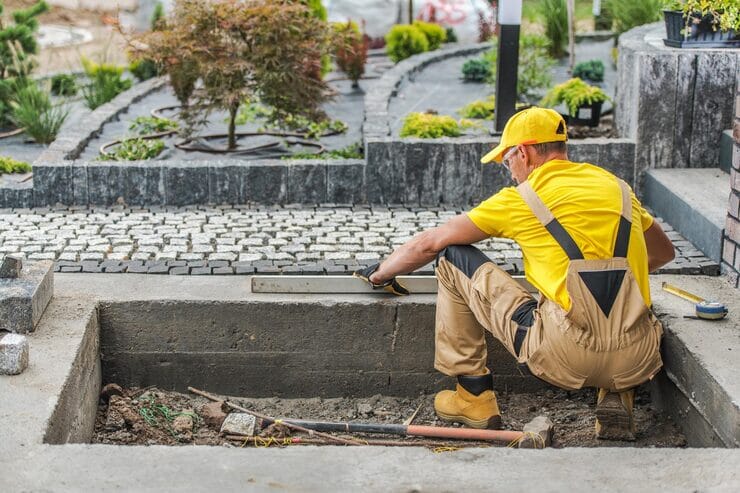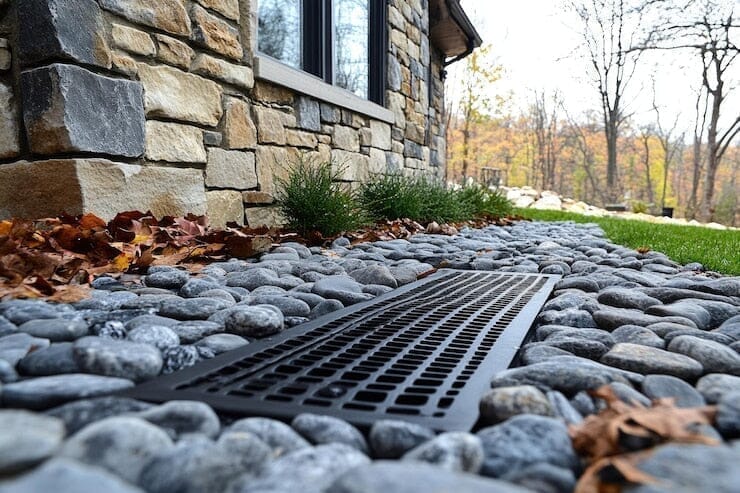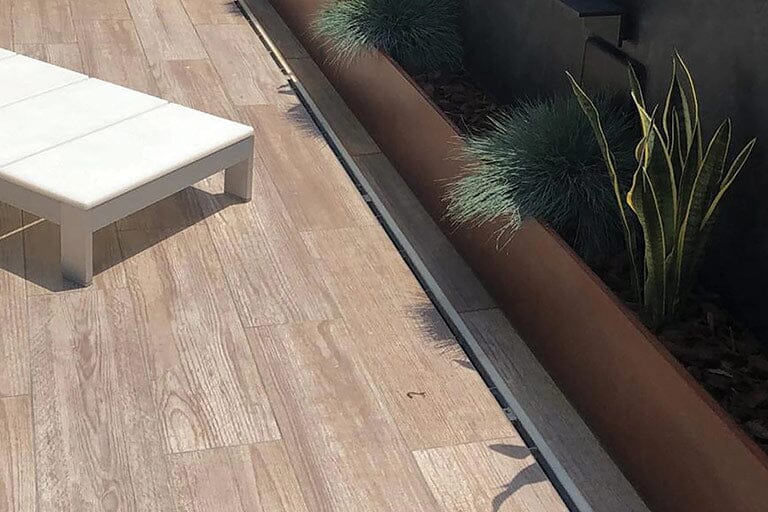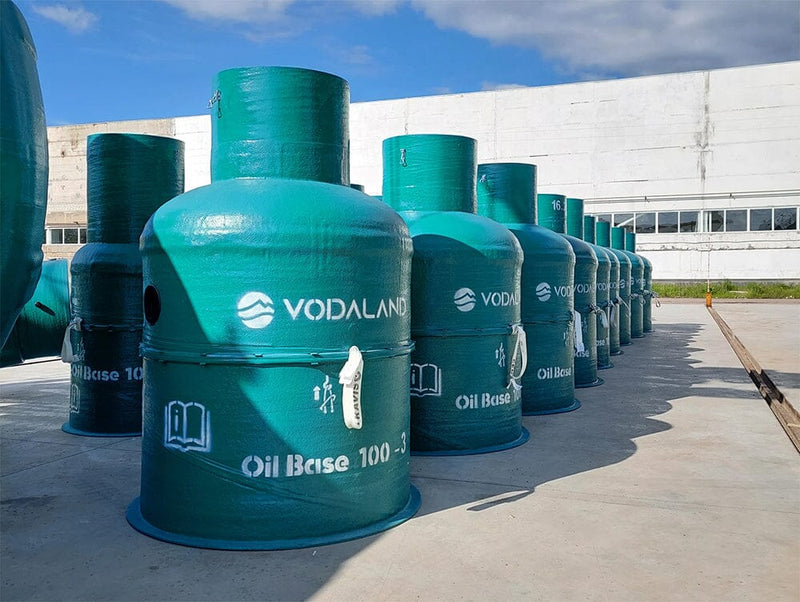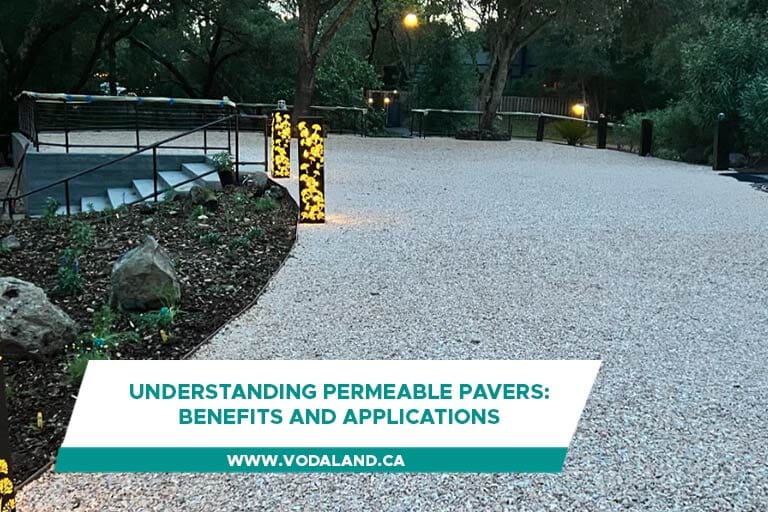What Causes Garden Flooding and What to Do About It
-
04/01/24
-
Vodaland Canada
A vibrant garden offers a peaceful retreat to anyone wanting respite from their busy schedule. Unfortunately, this calm and beauty can immediately vanish after torrential rain, turning into a messy flood and causing distress. In addition to being costly and annoying, garden floods can be harmful to your plants.
Flooding and waterlogging can leave lasting problems that gardeners must pay attention to. The longer the soil stays soaked, the worse these problems get for plants and gardens. It's essential to address these problems, and the first step in developing successful preventative measures is understanding why your backyard is flooding in the first place.
Causes of Garden Flooding
There are several reasons why your garden may be flooded, including:
Heavy rainfall is a primary cause of garden flooding. Water gathers in the garden when it rains more than the soil can soak up or the drainage system can handle. This can lead to waterlogged soil, saturation of plant roots, and surface flooding. The amount and duration of rain are crucial factors in determining the risk of garden flooding.
The design of your garden can unintentionally contribute to flooding. Water accumulation might result from building raised beds or planting in low-lying locations without taking water flow into consideration. If your garden has impermeable surfaces like concrete or asphalt, rainwater cannot penetrate the soil, raising the likelihood of flooding.
If your garden, or part of it, sits lower than the rest, it might be drawing water away from its surroundings. Essentially, your garden functions as the drainage for the area.
Additionally, the ground level might be close to the water table. The water table is where underground water saturates the soil and sediment. In practical terms, when the water table is high, excess water has no place to drain, and sometimes groundwater can bubble up into gardens.
The type and preparation of your garden soil can affect its drainage. Compacted or heavy clay soils have poor drainage, leading to water pooling. Inadequate soil amendments, such as organic matter or compost, can limit the soil's ability to absorb and retain water, increasing the risk of flooding.
The natural shape of the land can affect how water drains in your garden ― if it's sloped, water can rush downhill, flooding lower areas. Similarly, soil type matters. Compacted or clay soil absorbs water slowly, increasing runoff. Well-draining and healthy soil is key to prevent flooding as they can soak up water faster than others. Gardens near water bodies or flood-prone areas are also at higher risk of flooding.

Soil, plants, and trees act like sponges, soaking up and holding water. On the other hand, structures, roads, and fake grass don't have this ability. As urban areas are increasingly covered with artificial surfaces, there are fewer spots for water to gather and drain away naturally.
As places become more developed with concrete and buildings, the natural water storage diminishes. Gardens that used to stay dry now face the risk of flooding. If there's been a lot of construction, landscaping, or tree cutting in your neighborhood, it might be causing a drainage problem. This is often observed in new housing developments as they grow. People moving into homes in the midst of construction often notice their gardens becoming waterlogged.
While watering your plants adequately is important, overwatering can lead to garden flooding. When plants get more water than they can absorb or the soil can hold, excess water accumulates, saturating the ground and potentially causing flooding. Poor watering practices, like watering too often or using inefficient sprinkler systems, can worsen the issue.
A poorly designed or inadequate drainage system can contribute to garden flooding. Also, blocked or too-small gutters, downspouts, or underground drainage pipes can impede water flow, causing water to accumulate in the garden.
How to Get Rid of Flooding
To eliminate flooding, here are garden flooding solutions you can implement:
Maintain your lawn to prevent flooding. Purposely landscaping for flood-prone areas helps healthy grass absorb water effectively and avoid surface water accumulation. A level lawn ensures water penetrates the soil, improving drainage and reducing flood risks. Regular care practices contribute to a natural barrier against soil erosion.
Plant leafy vegetation, such as trees and shrubs, to naturally protect your garden from flooding. The dense leaves slow down rain, allowing water to be absorbed into the soil. The plants' roots act as underground channels, enhancing water absorption and preventing runoff.
Opt for natural materials over artificial surfaces in your garden to prevent flooding. Use permeable pavers and materials like plants, absorbent soil, and greenery instead of concrete or fake grass. This helps water soak into the ground, reducing the risk of floods.
Combat surface water flooding by using gravel support mats with grass or gravel. These mats allow rainwater to pass through, addressing issues caused by excessive garden paving. They stabilize surfaces for parking or pathways while preventing weed growth.
Conserve water and mitigate flooding by collecting rainwater. Channel rain from roofs into storage tanks to decrease runoff in your garden, reducing the likelihood of flooding during heavy rainfall. Simple yet effective, this practice enhances water conservation efforts and safeguards against potential flood damage.
Prevent garden flooding by constructing a soakaway system. This underground structure manages surface water runoff, slowly allowing it to infiltrate the ground. Soakaways for flooded gardens effectively prevent water pooling and direct excess moisture away from your garden.

Take a proactive approach by installing a garden drainage system like trench drains. These systems redirect water away from your garden, preventing water buildup. Proper maintenance is crucial to ensure your drainage system works effectively.
To keep your garden free from floods, it's vital to understand what causes them and take preventive actions. Issues like heavy rain, inadequate drainage, and improper land slopes are critical contributors to garden flooding.
How do you solve flooding? Consider asking professionals like Vodaland Canada for reliable drainage solutions. Our experience in manufacturing and supplying effective drainage systems can divert excess water away from your garden and prevent floods. If you're dealing with garden flooding, contact us at (905) 238-1771 today for assistance.







